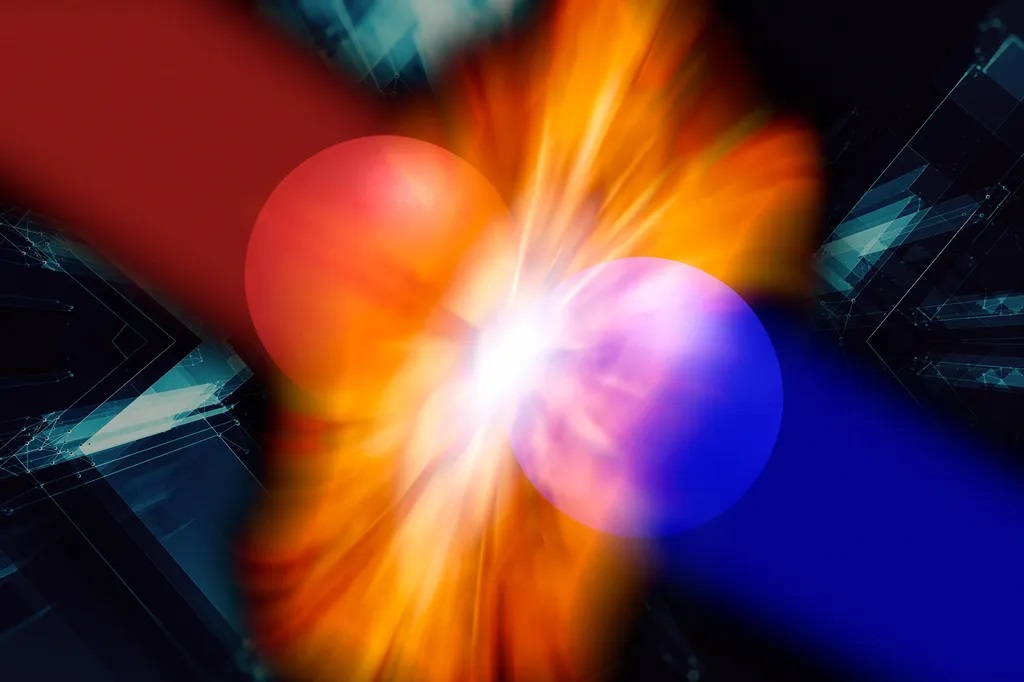From the point of view of physics, matter and antimatter have absolutely equal “rights to exist”. But in our world, we are surrounded almost exclusively by matter, while its opposite occurs extremely rarely during some nuclear reactions. It can also be obtained artificially in particle accelerators, spending a lot of energy. Where did such a “skew” towards one of the types of substance come from? The staff of the University of California at Riverside, together with colleagues from Tsinghua University in China, tried to answer this question. The results of their joint study are published in the journal Physical Review Letters.

According to modern ideas, in the first moments of its existence, the universe was filled with an equal number of particles of matter and antimatter. The latter have the same mass as their material counterparts, but the opposite electric charge, and in the case of neutrons and neutrinos, the opposite spin. Over time, space expanded, the matter in it cooled, and “normal” particles were able to interact with antiparticles, that is, annihilate with the complete transformation of the total mass into energy. But in the end, one type of particle turned out to be a little more. In this “little bit” (according to calculations, it is about one hundred millionth of the total primary mass of the Universe), we now live. It consists of all stars, planets, galaxies, interstellar and intergalactic matter — everything that astronomers register during observations in all ranges of electromagnetic waves from radio to gamma radiation.

Each elementary particle that makes up the surrounding matter (on the left) corresponds to an equal-mass antiparticle with an opposite charge or spin. From top to bottom: electron-positron, proton-antiproton, neutron-antineutron
Nowadays, scientists are building super-powerful colliders where subatomic elementary particles collide in conditions of ultrahigh energies. The most famous of these devices is, of course, the Large Hadron Collider. During such collisions, even heavier unstable particles are formed, the study of which allows us to learn more about the nature of matter. However, in the early Universe, conditions were even tougher, the density of matter was greater, and the energy of collisions was billions of times higher. In fact, then the most powerful of all possible colliders “worked”, forming much heavier particles. They could become responsible for the future “universal asymmetry”.
Due to their large mass, these particles formed the first disturbances in the previously homogeneous primary matter. At a certain stage in the evolution of the Universe, as it is now believed, it experienced inflation — a short but comprehensive expansion at a speed many times faster than the speed of light. All the inhomogeneities that had managed to arise in it by this moment immediately acquired cosmological scales and later became the “embryos” of future concentrations of matter, from which stars, galaxies and the entire large-scale structure of our world were formed.
The authors of the article suggested that by studying the large-scale structure of the Universe, which today manifests itself, for example, in the form of the distribution of galaxies across the sky and the pattern of inhomogeneities in the temperature of relic microwave radiation, we will be able to decipher the physics of heavy subatomic particles. And then, knowing it, we can move on to the physics of lighter particles — the so-called leptons. It is at their level that the matter and antimatter asymmetry begins. Especially important in this sense are the mechanisms of the appearance of the so-called right-handed neutrino.
“The fact that matter dominates our Universe remains one of the oldest and most confusing mysteries of modern physics,” explains the subject of his research, Jan Kui from the University of California at Riverside. — A subtle imbalance or asymmetry between matter and antimatter in the early Universe is necessary to achieve today’s dominance of matter, but it cannot be realized within the known laws of fundamental physics”.
One of the opportunities to look behind the scenes of these processes is the study of leptogenesis — the synthesis of light elementary particles, the most famous of which are electrons. For a long time, this was considered impossible, if only because the mass of the right-handed neutrino exceeds the potential of the most powerful colliders ever built by many orders of magnitude. But if we consider the primary Universe to be such a collider, we can learn a lot of interesting things about the appearance of such neutrinos by analyzing the distribution of galaxies and the “pattern” of the temperature of microwave radiation. “The conditions for generating asymmetry, including the interaction and mass of the right-handed neutrino… can leave characteristic imprints in the statistics of the spatial distribution of galaxies or the cosmic microwave background, which can be accurately measured,” explained the scientist. “Astrophysical observations that will be carried out in the coming years can detect such signals and unravel the cosmic origin of matter.” As a group of researchers note in the conclusions of their article, the application of the physics of the cosmological collider will become possible after the completion of astrophysical experiments of the near future — such as SPHEREx. They will provide us with more accurate data about the structure of our Universe, and we will be one step closer to solving the mystery of the origin of matter.
Follow us on Twitter to get the most interesting space news in time
https://twitter.com/ust_magazine
